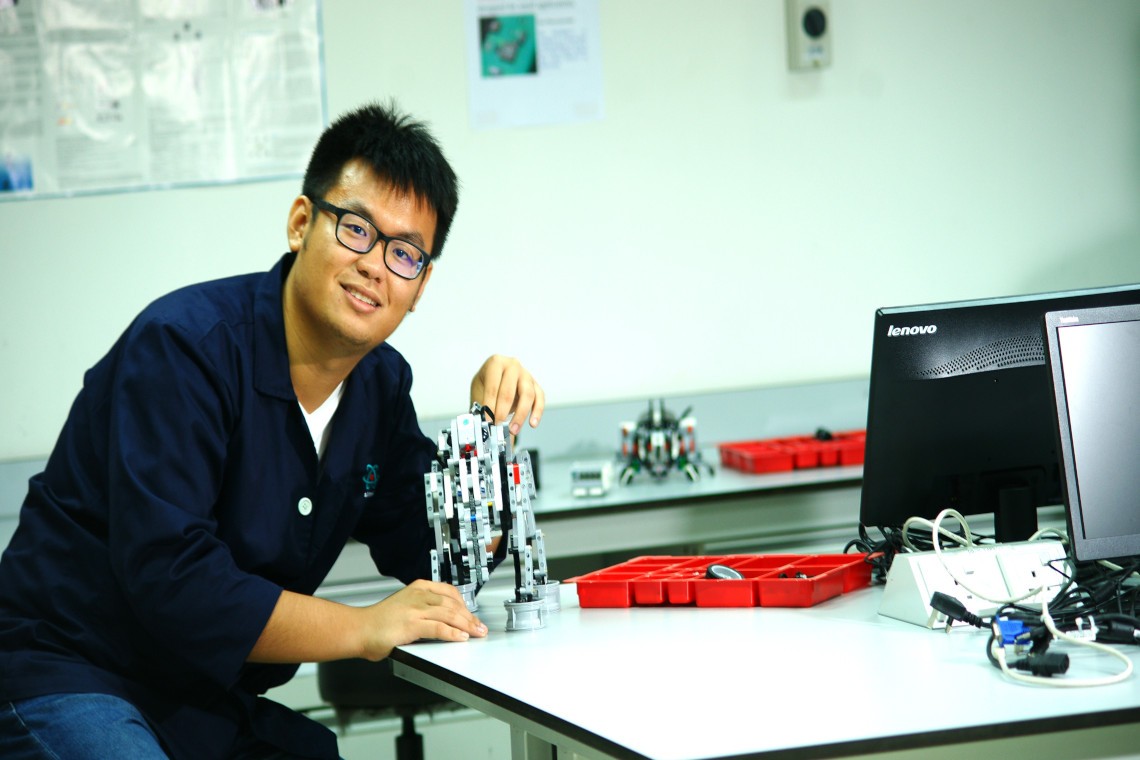Bachelor of Engineering (Hons) in Electrical & Electronic Engineering(R3/523/6/0075) (08/25) (MQA/FA 2774)

Programme Overview:
The Bachelor of Engineering (Hons) in Electrical and Electronic Engineering at AIMST is a rigorous 4-year program designed to equip students with the essential knowledge and skills needed for a successful career in the field. The curriculum encompasses a blend of theoretical foundations, practical applications, and emerging technologies, ensuring graduates are prepared for diverse opportunities within the expansive realm of Electrical and Electronics Engineering, a cornerstone of global industries.
Throughout the program, students engage in hands-on learning experiences, including industrial training, research projects, and integrated design projects. These components provide invaluable real-world exposure and foster the development of critical problem-solving abilities.
Covering a broad spectrum of topics, students delve into electronic and electrical systems, communications systems and networks, electromagnetic waves and fields, power electronics, engineering mathematics, computer and digital logic, circuit theory, integrated circuit design, digital signal processing, control systems, and power systems analysis. Additionally, courses aligned with Industry Revolution 4.0 such as machine learning, deep learning, big data analytics, and artificial intelligence are integrated into the curriculum, ensuring graduates are well-versed in cutting-edge technologies shaping the future of engineering.
Upon successful completion of the program, graduates emerge with a solid foundation in Electrical and Electronics Engineering, enabling them to pursue diverse career paths including software development, project management, consultancy, and programming across various industries locally and internationally.
It’s noteworthy that the Bachelor of Engineering (Hons) in Electrical and Electronic Engineering program is accredited by esteemed bodies including the Engineering Accreditation Council Malaysia (EAC), the Malaysian Qualifications Agency (MQA), and the Board Of Engineers Malaysia (BEM), ensuring the quality and recognition of the qualification.
Programme Structure
| Year 1 | Year 2 |
|---|---|
| Engineering Mathematics | Engineering Mathematics |
| Electronic Devices | Electronic Circuits |
| Programming Technique | Electromagnetic Fields & Waves |
| Electrical Circuits | Electrical Machines 1 |
| Engineering Mathematics | Measurements & Instrumentation |
| Engineering Materials | Engineering Mathematics |
| Digital Circuits & System Design | Signals & Systems |
| Communication Systems | |
| Electrical Machines 2 |
| Year 3 | Year 4 |
|---|---|
| Control Systems | Final Year Project –Phase I |
| Generation & Transmission | High Voltage Engineering |
| Linear Integrated Circuits | Integrated Design Project-Phase II |
| Microprocessor & Microcontroller | Sustainable Engineering |
| Project Management & Finance | Internet of things |
| Digital Signal Processing | Big Data Analytics |
| Engineers & Society | Artificial Intelligence |
| Power System Analysis | Wireless Communication for 5G |
| Power Electronics & Drives | Final Year Project –Phase II |
| Electric Power Distribution & Utilization | Robotics |
| Integrated Design Project-Phase I | Cyber Security |
| Smart Grid | |
| Machine Learning | |
| 12 Weeks of Industrial Training | Deep Learning |
Minimum Entry Requirements
| QUALIFICATION | ACADEMIC REQUIREMENTS |
|---|---|
| AIMST Foundation in Science/ STPM /Matriculation preuniversity | Programme with a minimum grade C (CGPA 2.0 ) in Mathematics and ONE relevant Science subject and pass in SPM or its equivalent with at least pass in English |
| Recognized Diploma in related field from recognized Malaysian Government | CGPA ≥ 2.0 Recognized related Vocational and Technical / Skills Diploma pass with a minimum CGPA of 2.0 and pass in English at SPM level |
| Other qualifications | Will be assessed and referred for approval on a case-by-case basis. For Malaysian students MUET band2 upon registration for the Bachelor of Engineering programme. International students pass IELTS with a band of 5.0 or TOFEL with min 500 paper-based or equivalents |
Career Opportunites
Career opportunities span various industries such as energy, telecommunications, manufacturing, automotive, aerospace, healthcare, and information technology, offering graduates diverse pathways for professional growth and impact. Graduates are offered placements with profiles including:
- Electrical Engineer
- Electronics Engineer
- Communications Engineer
- Embedded Systems Engineer
- Control Systems Engineer
- Power Systems Engineer
- Robotics Engineer
- Project Manager
- Renewable Energy Engineer
Key Highlights
- International Accreditation
- Articulation Pathways
- Excellent Industrial partnerships and Employability
| SITE | LINK |
| BEM Official Website | http://bem.org.my/ |
| Mandatory Registration with the Board of Engineers Malaysia | http://bem.org.my/documents/20181/33485/Mandatory+registration+with+BEM.pdf/80098f0a-4fba-4f58-a980-a783cc1a2366 |
| BEM Mini Convention Presentation Material | http://bem.org.my/web/guest/bem-mini-convention |
| BEM Webinar Presentation Material | http://bem.org.my/web/guest/bem-webinar-presentation-material |
| BEM Official Youtube Channel | https://www.youtube.com/@boardofengineersmalaysia |







